Trying to write for magazines or other publications and don’t know how to craft an editorial?
No problem.
Today I’m going to show you how to write and format an editorial in a few easy steps.
Editorial writing is very lucrative and fun, making it an awesome avenue for writers.
However, writing editorials that get approved by picky editors can be a whole other ball game.
Follow along as I show you the ropes of editorial writing.
What is an editorial?
First of all, let’s define what an editorial is.
According to Google, it’s:
A newspaper article written by or on behalf of an editor that gives an opinion on a topical issue.
It’s typically focused on a trending topic or something relevant to a certain industry.
Since it’s an opinion-based piece, it also requires thorough evidence, statistics, and research to make it credible.
You express a specific opinion and viewpoint when writing an editorial that you attempt to persuade readers to believe.
Editorial format
Let’s break down a live editorial to understand proper formatting.
It all begins with the headline and featured image.
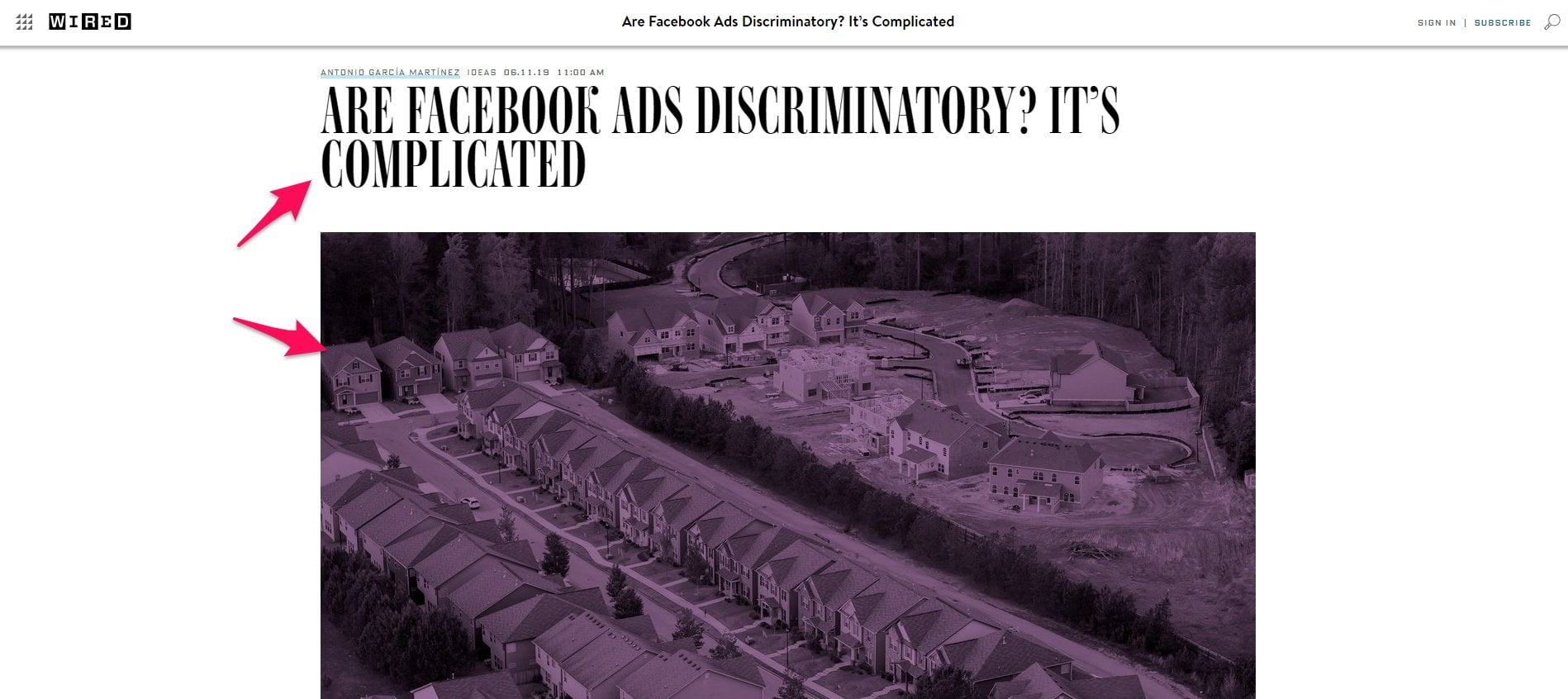
I’ll teach you how to write editorial headlines in a moment, but remember it’s the first thing readers see.
That means if your headline stinks, nobody is going to click through to read the article.
Additionally, in the words of Claude Hopkins, “Images are sales people in themselves.”
Depending on the publication you’re writing for, you may or may not have control over the featured image used for the piece.
However, the picture should preferably support and enhance the topic you’re speaking about.
Moving on, a hook and a leading paragraph are the next crucial parts of an editorial to nail.
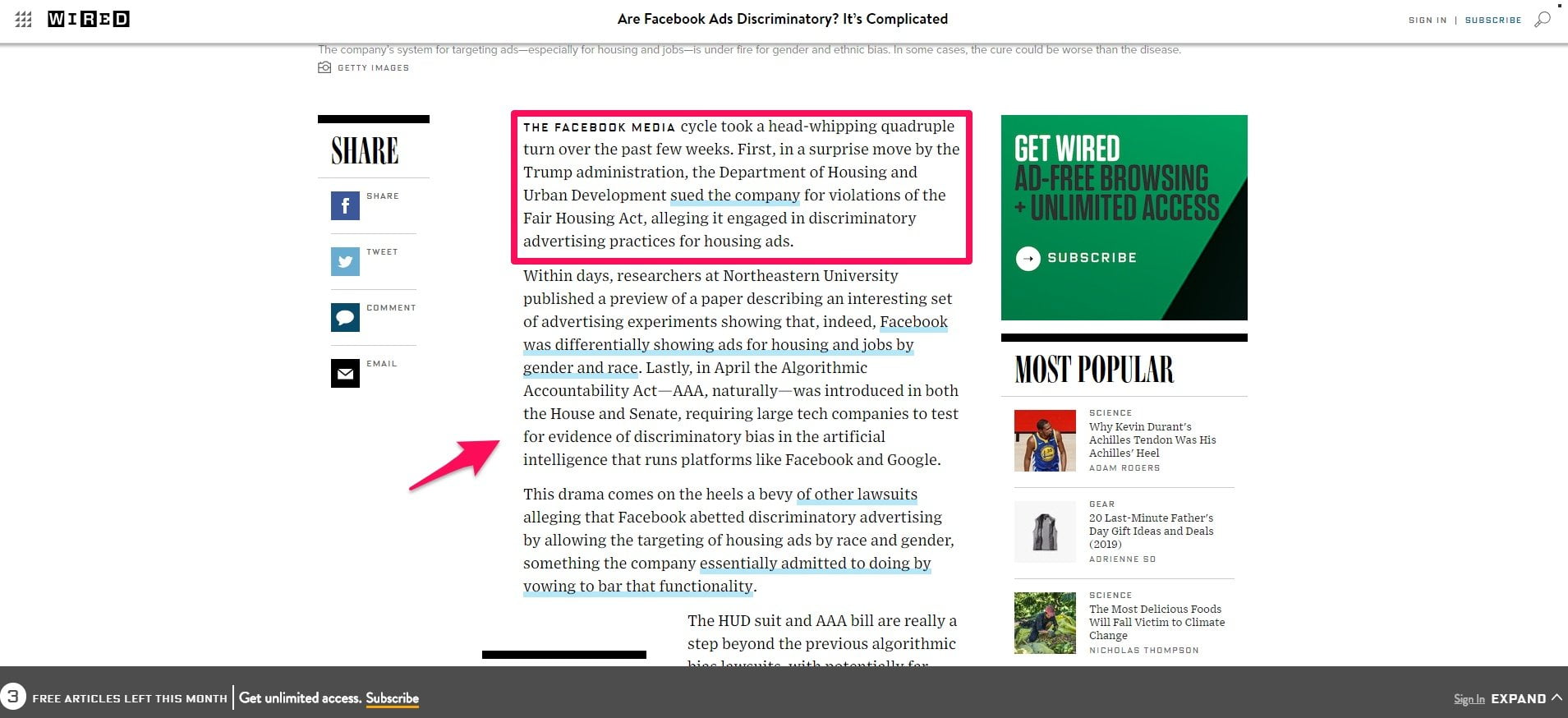
The first sentence or paragraph needs to make a bold statement or interesting observation to capture the reader’s attention.
Note how in this Wired article, the writer mentions how the Department of Housing and Urban Development sued Facebook for violating the Fair Housing Act.
That is serious news.
Anyone interested in big data will be hooked into reading the remaining content.
This is why the leading paragraph needs to support the intro with further detail.
Furthermore, clarification may need to be done around some terms and topics if they are complex in nature like so:
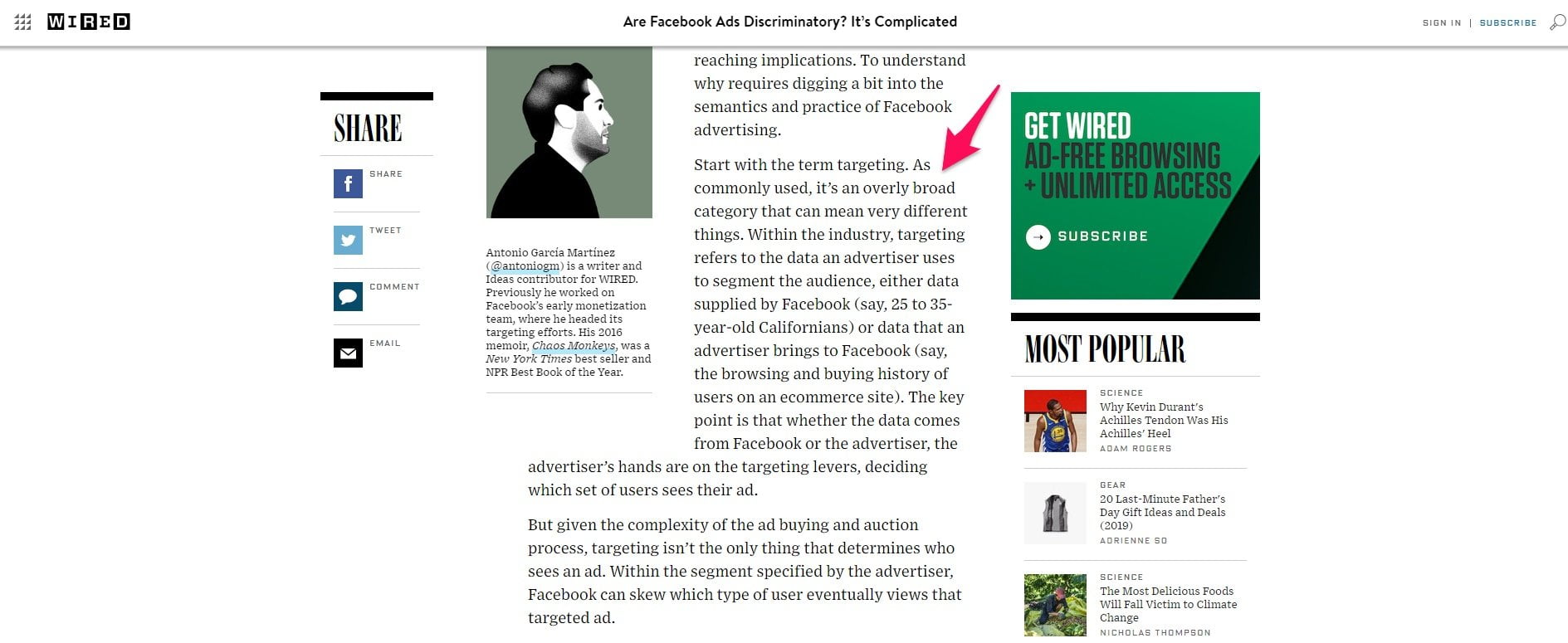
Since editorials are opinion based, it’s of utmost importance that you mix in your perspective on things, too.
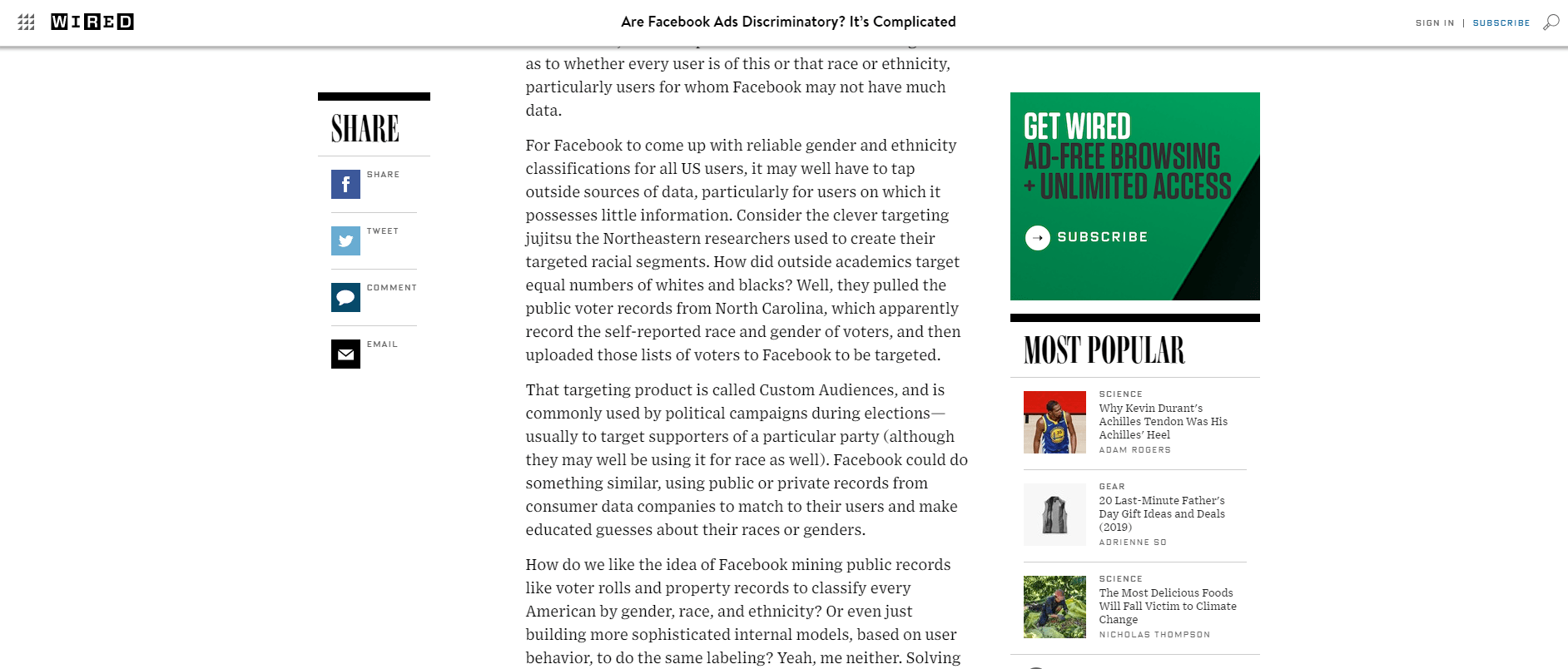
Seldom are editorials written in the first person, though.
Instead, write your opinion as if it’s factual information, and back it up with supporting evidence.
For example, the author of this Wired article elaborates on how Facebook’s targeting and audience system has ethical and technical issues.
As regulations tighten up, this is only going to create more problems for them in the future and it’s deserved in a way.
On the flip side, another writer could’ve supported the idea of Facebook’s approach and that would’ve been their opinion.
See where I’m going with this?
You need to choose one side of the story and stick to it all the way through.
Which brings me to the conclusion:
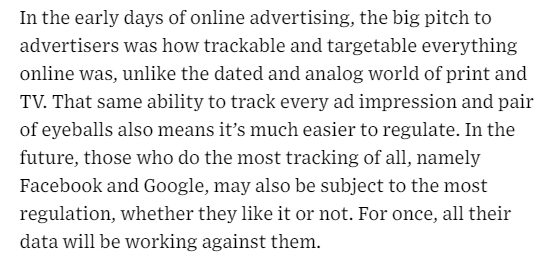
It should summarize the main points of the article and end with a thought-provoking statement.
Publications pay close attention to the conclusion because it’s often what spikes engagement such as comments and social shares.
That’s why I recommend putting a solid effort into polishing off your piece before sending it to an editor.
You can take care of most of these processes with a tool like Jasper.ai which you can try for free here. Watch my review to learn more below.
Editorial examples
Here are great examples of editorials you should swipe.
Use them as inspiration for headlines, formatting, voice, and to reference while writing.
New York Times
This is an editorial example from the New York Times on American and Europe’s digital privacy.

It uses a thought-provoking headline by asking the reader a question. An attention-grabbing and unique image is used to accompany the article.
Note the subhead elaborates on the headline and position the author takes.
The editorial begins with background information on Congress questioning tech CEOs on collecting personal information, the vulnerability of Americans, and how little has been done to move forward.
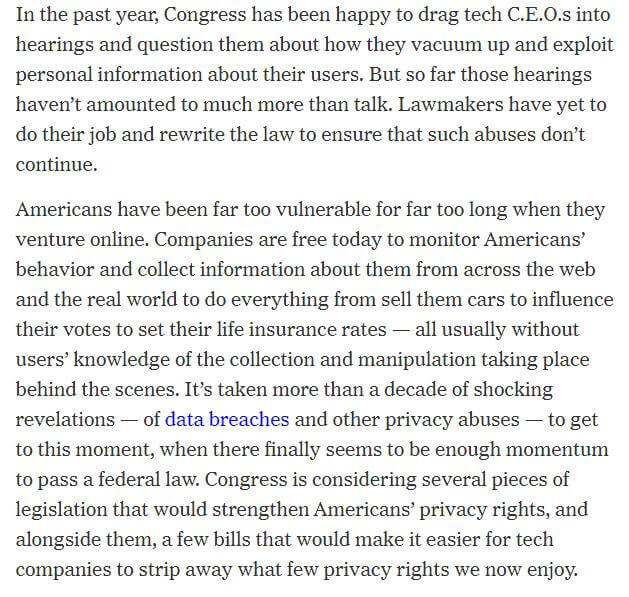
They also speak about Europe’s solution to online privacy which American Congress needs to learn from. This helps readers understand the topic’s context while stating the author’s position.
The body of the editorial uses quotes, examples, and further information to support its main points.
It’s concluded with a summary of the article and what the author believes the next best steps are.
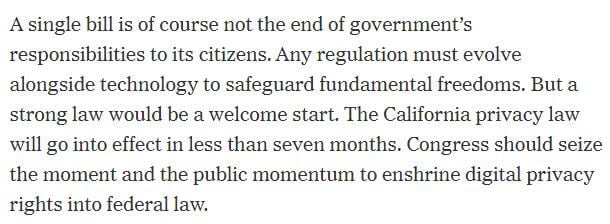
The Washington Post
Here’s an editorial from The Washington Post on Donald Trump’s presidency and if he should be impeached.
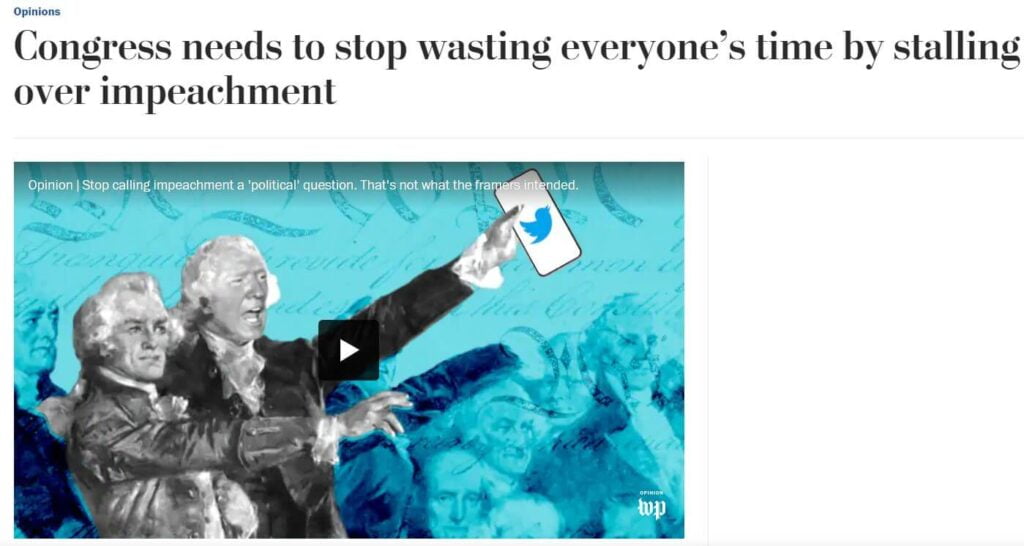
The headline is provocative, makes a bold statement, and addresses a specific party (Congress).
The video underneath serves as a featured image and provides more information.
The author, Danielle Allen, immediately states her position that impeachment isn’t just a political question but a legal and moral one as well.
She asks questions to engage the audience and get them thinking.
Danielle elaborates on very specific parts of the Constitution to support her claims about impeachment, how it works, and what it means.
She concludes the editorial by recapping her stance that Congress should audit the president and if he’s committed an impeachable crime according to the books.

The Huffington Post
Next, we have an editorial example from The Huffington Post on climate change.
I love the headline. By not directly saying what the scandal is, it makes you wonder and click the article.
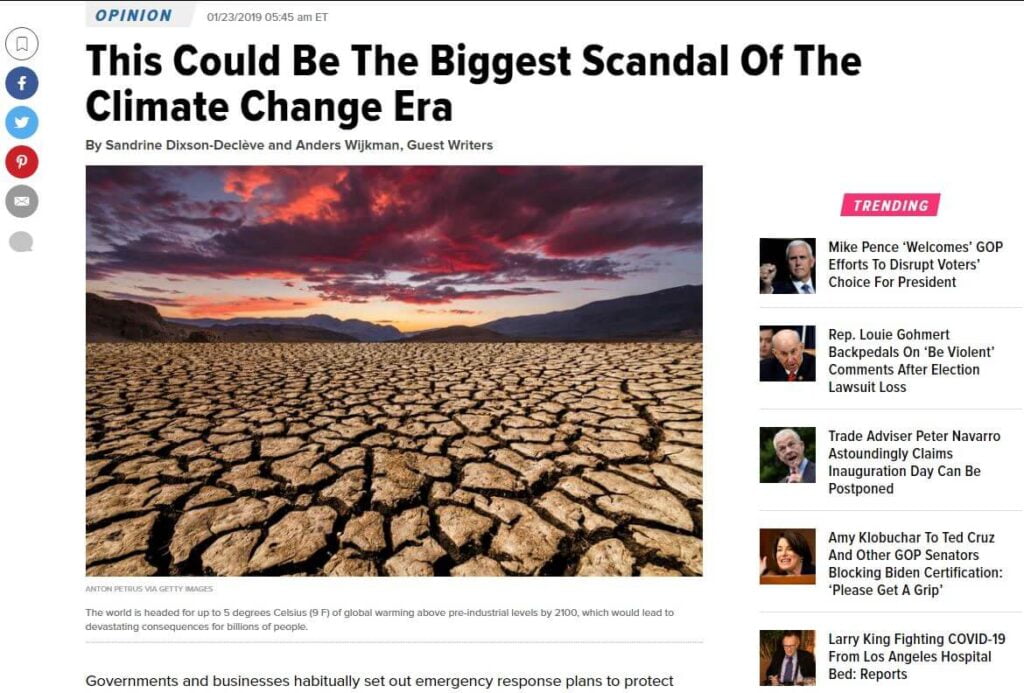
The subhead provides more context and creates a sense of urgency be saying global warming is increasing and billions of people are at risk.
A stage is set in the first couple of paragraphs by elaborating on how there are plans to protect the economy, jobs, but nothing from climate change.
The author cites specific events, summits, data, and findings that all back up their claims that global warming is rising and not enough action is being taken to prevent it.
Note how the last few paragraphs of the editorial focus on what can be done to solve the issue. They present their opinions and ideas which is what editorial style is all about.
How to write an editorial
Now that you understand how editorials are formatted, let’s dive deeper into editorial
Step 1: Find an epic topic to cover
If you want to get accepted by an editor of a publication, your pitch better be really damn good.
They don’t want generic or simple topics, but rather ones that cover a popular subject with your own unique twist.
For example, the Toronto Raptors just won the NBA Finals, so you could write a piece on “What Entrepreneurs Can Learn From The Toronto Raptors Winning The Finals.”
This article could elaborate on how their team’s training style and strategies can be applied to businesses.
It’s a random example but stick with me.
You could also search for keywords through Google News to brainstorm.
Cannabis is really big in Canada with legalization being relatively new, so I searched for that:
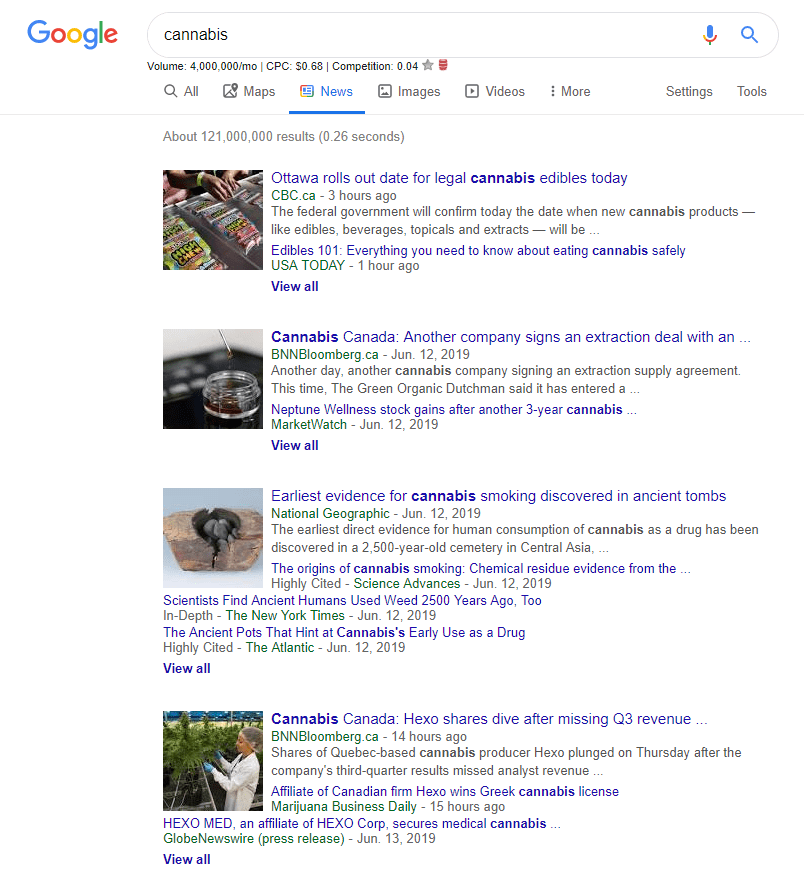
Based on the first result, you could pitch an article on why you don’t think Ottawa’s legal cannabis edibles are a good decision for the city.
This is what we would call a response post.
It reacts to an existing story and provides another opinion on the matter.
Make sure you read the guidelines for the publication you’re writing for, as they may have restrictions or tips for topics.
Once you have an idea for a topic, consider the audience you’re writing for.
What do they care about? What do they want to learn? What are their demographics?
This will change your writing and shape the editorial.
You want it to resonate with the section’s audience as much as possible.
That’s why I suggest reading previous articles and analyzing the reader’s engagement.
What do they normally comment on? Do you notice a pattern in how they speak?
Apply these observations to your editorial, and it will resonate with the target audience more.
Lastly, make sure to collect resources, references, and data to support the article.
Continuing off of the cannabis example, you could search for “cannabis stats” and use a couple of the results to back up the points you make.
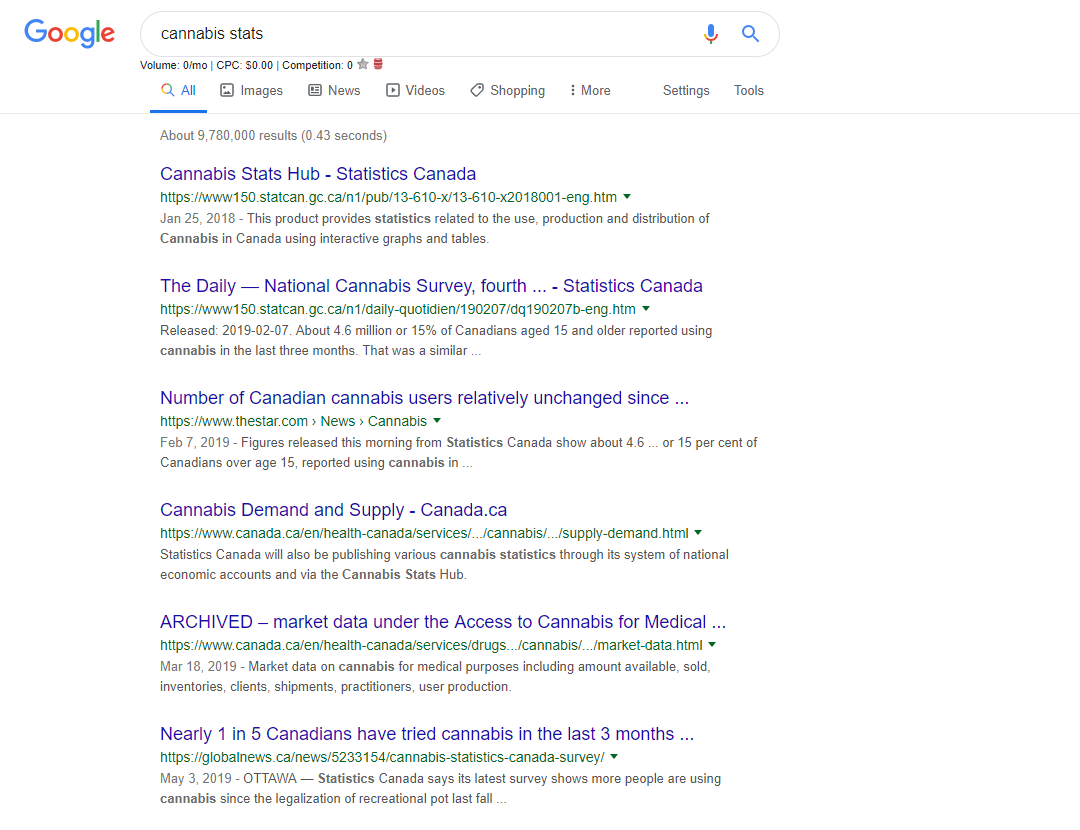
Once you’ve done this, you can move on to the next step.
Step 2: Craft a headline that makes BuzzFeed proud
As I mentioned earlier, the headline is what will ultimately attract clicks, so you need to put a lot of energy into writing one.
BuzzFeed has the reputation of being the king of clickbait, but it isn’t a bad thing.
From a writer’s perspective, we can learn a ton about how to write headlines from them.
Just look at their front page:
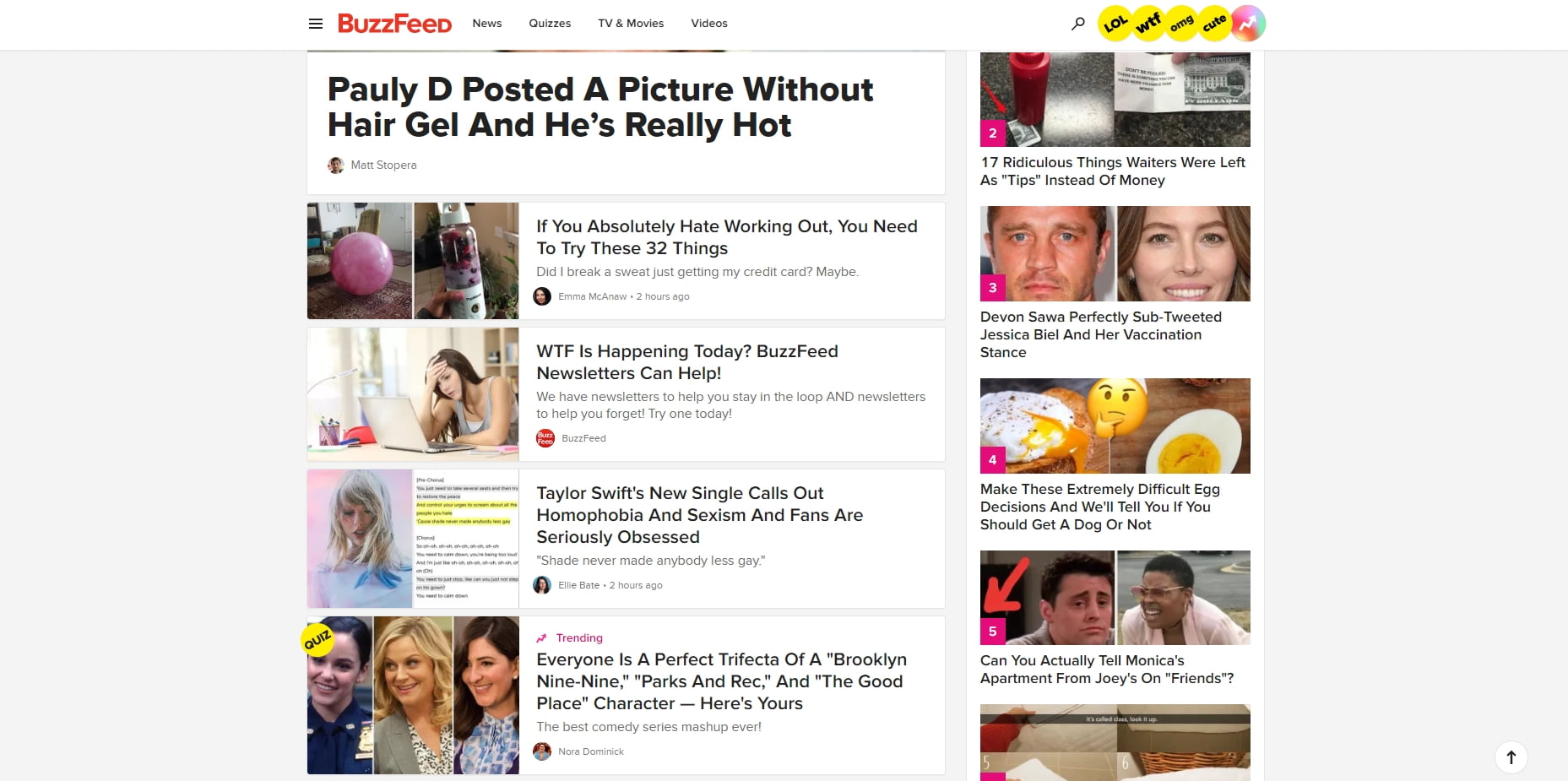
It’s a gold mine for ideas!
Some strategies you can use for headline copywriting include:
- Explanatory: “George Bush Wears The Latest Yeezy’s to Summit, And We’re Trying to Figure Out Why” is an example of a headline that clearly explains what the article is about. There’s no mystery or questions needed.
- Bold: Making a bold statement in the headline like “Scientists Find The Link Between Beer and Mortality” compels users to read the editorial to learn more.
- Question: Some editorial headlines come in the form of a question that resonates with the audience. “Trying to Lose Weight? You Won’t Believe What This Doctor Discovered” is an example.
Step 3: Make the outline
Before you begin writing your award-winning editorial, slow your horses.
Start with an outline. It’s a staple part of forming the editorial structure.
This will speed up the writing process and make your workflow as smooth as silk.
An outline should consist of:
- The headline
- The introduction and hook
- Major and minor points
- Conclusion
You don’t need to spend a lot of time on the outline, either.
It simply acts as an organized guideline for when you crack your knuckles and begin typing away.
Make sure that you have all of your resources and references opened up or saved, too.
I recommend that you read my two previous articles to speed up your writing process:
- 8 Insanely Effective Tips on How to Overcome Writer’s Block
- Writing Process Steps For Producing Incredible Copy
This video will also help you with the writing process.
Step 4: Write that bad boy!
Editorials have an opinion, and that opinion needs to be strong.
That means don’t use passive speech or weak arguments to back up any points.
The idea you’re proposing is the ultimate truth in your eyes, so you have to write in that manner.
If you read a lot of editorials, you will notice that they are written and edited to support a single idea.
Stick with that all the way through until the end.
Take a firm stance on the topic and position. If you ever mention an opposing view, make sure to explain why it isn’t correct. Be confident and use facts to support any claims.
At the same time, I recommend offering new ideas. Say something that hasn’t been said before … discuss a new angle … bring up data most people aren’t aware of. This will make it stand out.
I’m a huge advocate of practical content as well. Editorials are no different.
Don’t just talk about an issue or a topic. Talk about how it can be solved and give the reader actionable takeaways. Editorials become much more useful and memorable this way.
Some other editorial writing tips I have:
- Write several different headline ideas and pick the best one.
- Edit and proofread the hell out of the article once it’s done. Continually reference the publication’s editorial guidelines to ensure it’s perfect.
- Share the first draft with other writers, family, and friends to get their opinion.
- Don’t underestimate the power of sleeping on your writing. You’ll feel refreshed and approach the article with a clear mind the next day.
Who writes editorials?
Editorials are primarily written by writing staff working for magazines, websites, and other publications.
These pieces of content are handed off to an editor who will fix grammar, spelling, flow, mistakes, and other components.
An editor-in-chief will oversee all of the writers, editors, and staff that play a role in publishing editorials on a regular basis.
You can also be a freelance editorial writer. In this case, you contact out your writing services to many different publications at once.
It’s a great way to earn income and be your own boss.
Why write editorials
So, why should a business write editorials and what are the benefits of doing so?
Firstly, editorials are suitable for any publication that likes to keep its readers informed about recent news and events.
Look at Fortune, Entrepreneur, The LA Times, and similar publications.
They are pushing out content many times per day because there’s a constant flow of news to touch on.
This helps form your business into a thought leader and a trustworthy source of information.
Furthermore, editorials are much shorter in length than other forms of content which makes pumping out many easier.
You will also need a great team of writers and editors if you don’t have already one established.
Hopping on trends and waves will give your publication an immediate spike in traffic which is another benefit of writing editorials.
Similarly, this type of content is easily digestible and commonly shared which creates a viral effect.
Can an editorial be in first person?
Absolutely. You’ll notice that many editorials are written in first person depending on the individual publication and story.
Furthermore, all editorials found in the opinion sections of a publication will be in the first person because they are meant to share personal views.
Look at this editorial from The New York Times, for example.
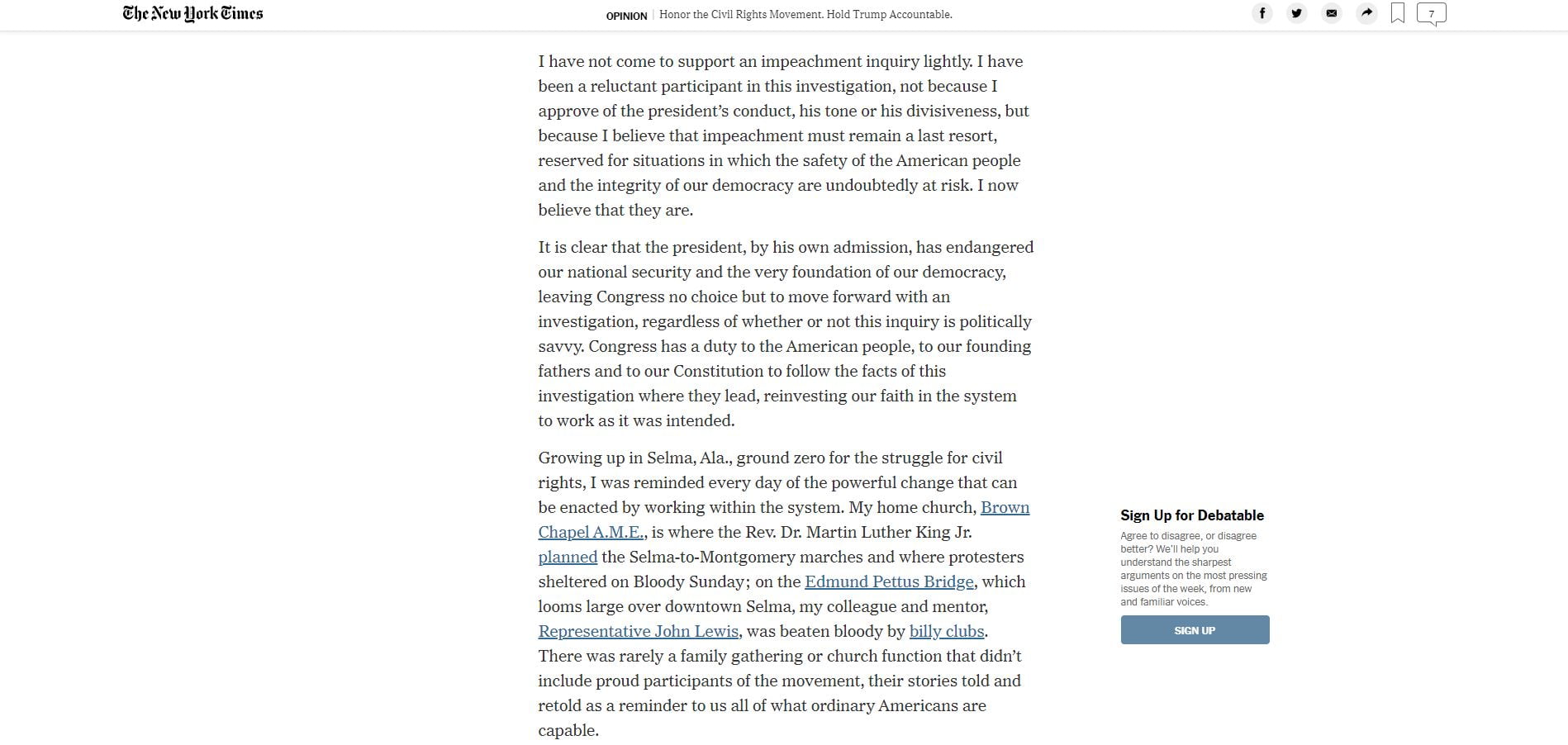
The very first word is “I.”
Once again, keep in mind that the story being covered will usually decide whether or not a first person perspective is appropriate or not.
Final thoughts on how to write an editorial
Editorials are articles that share news and personal opinions on topics that matter.
They are typically written about current events and subjects that readers are already familiar with.
Every great editorial begins with an eye-catching image and headline, as well. This is the bait that gets the reader into the article.
Then, the first paragraph needs to be easy to read while naturally leading to the rest of the content.
Demystifying complex terms and mixing in your own opinion are two keys to a good editorial. This makes it simpler to understand while unique since nobody has your opinion but you.
Write a clear conclusion that sums up the major points and creates the opportunity for readers to leave their opinions. Remember, news outlets thrive off of engagement.
Schedule a free consultation to learn more about my marketing services that will help your business drive more revenue.














